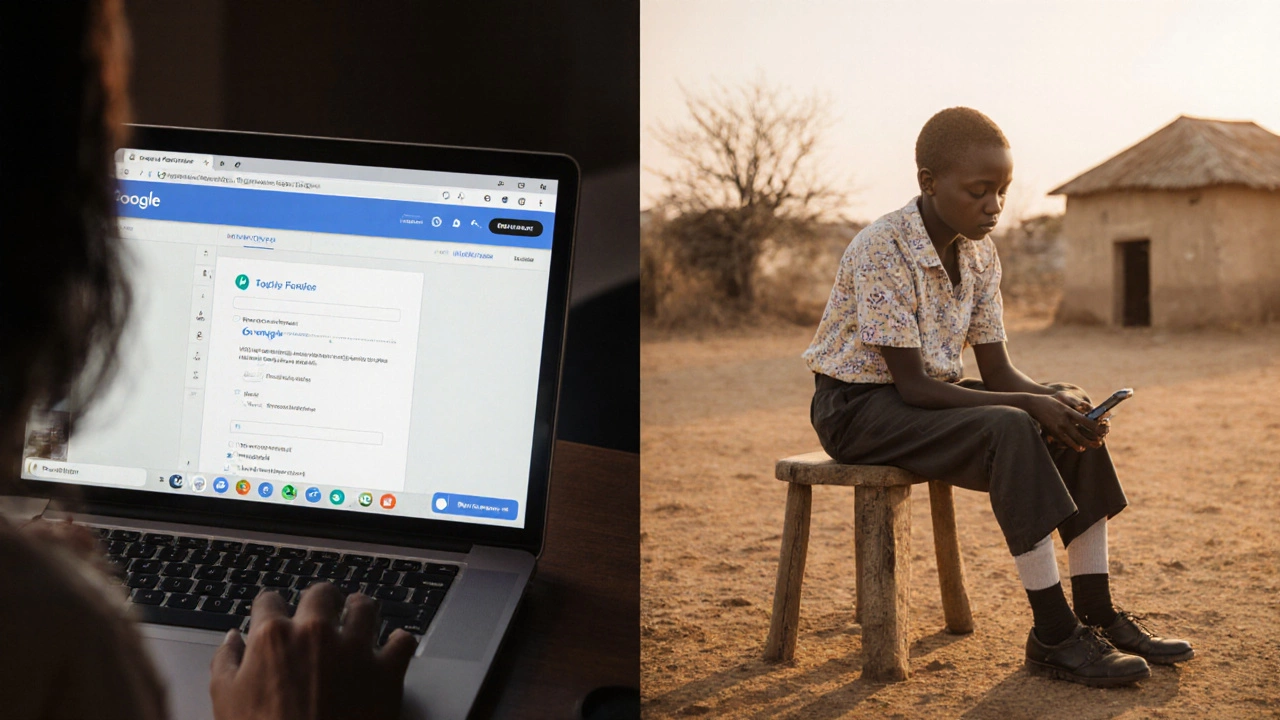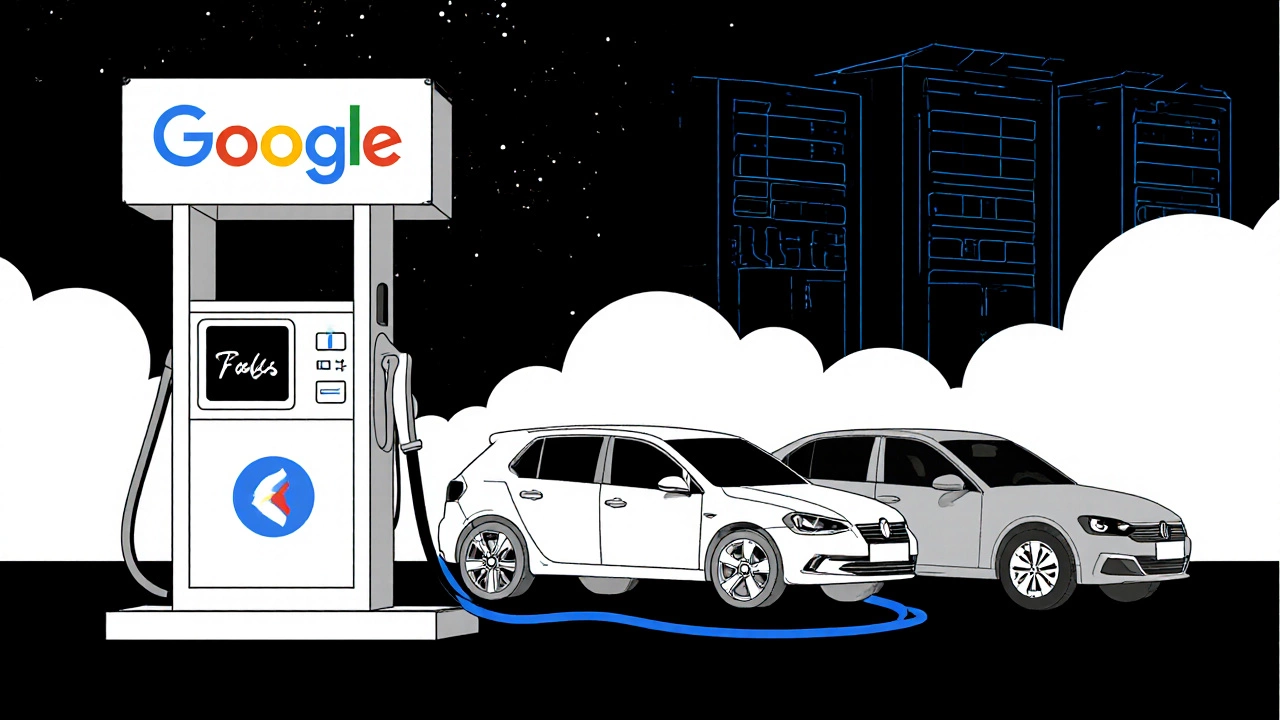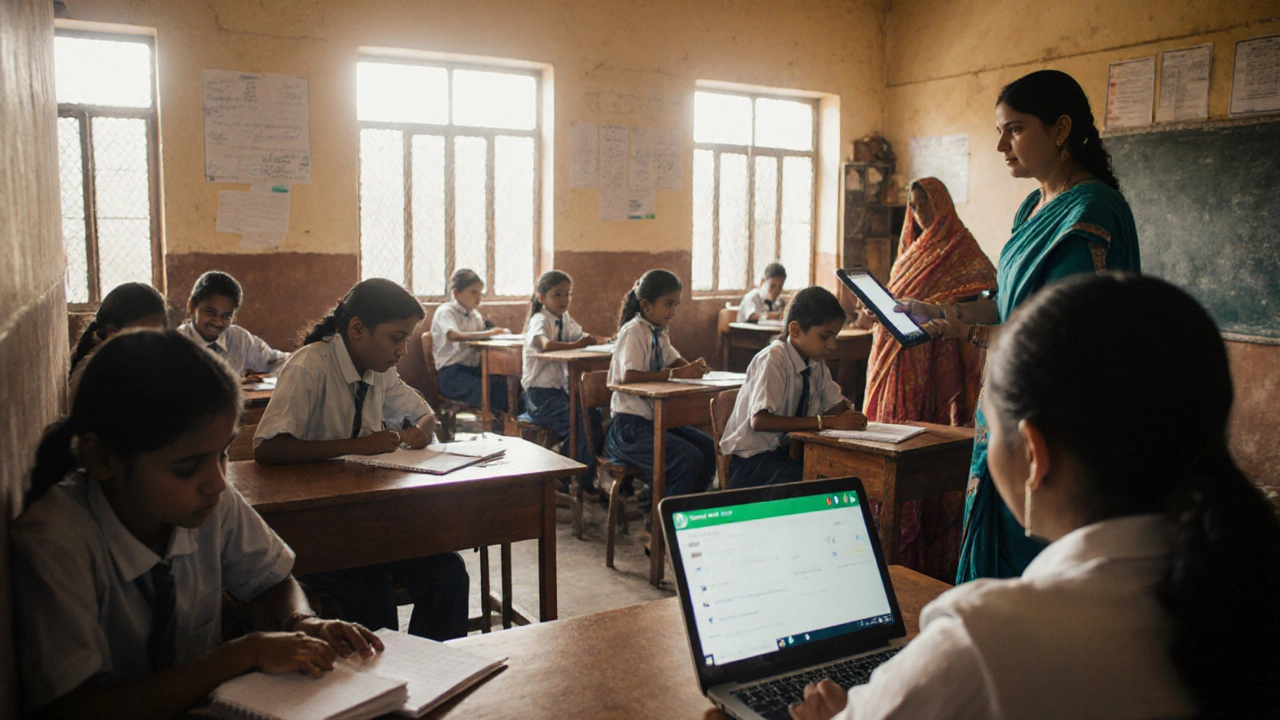Google isn't an e-learning platform-not the way Coursera, Udemy, or Khan Academy are. But if you're asking because you’ve seen teachers using Google Docs, students sharing slides on Drive, or entire schools running on Classroom, you’re not wrong to wonder. Google doesn’t sell courses. It doesn’t host video lectures from professors. It doesn’t issue certificates you can put on your LinkedIn. But it powers more learning than most platforms that do.
What Google actually provides for learning
Google gives you tools. Real, simple, free tools that people turn into classrooms. Think of it like a carpenter’s toolbox. You don’t buy a house from Home Depot, but you can build one with their tools. Same with Google.
Google Classroom is the closest thing to an e-learning platform they offer. It lets teachers create assignments, share materials, grade work, and give feedback-all in one place. Over 150 million students and teachers used it in 2024. It’s not a course library. It’s a digital desk where learning happens.
Google Drive holds everything: PDFs, videos, presentations, spreadsheets. Teachers upload lessons. Students submit projects. Groups collaborate in real time. No need for USB drives or email attachments. It’s the backbone of digital homework.
Google Meet turns living rooms into lecture halls. Schools in rural Australia, refugee camps in Kenya, and private tutors in Toronto all use it for live lessons. It’s free, works on phones, and doesn’t need fancy hardware.
Google Forms is used for quizzes, exit tickets, and feedback surveys. One teacher in Sydney built a self-grading math quiz that adapts based on student answers. No grading. Instant results. That’s not a platform feature-it’s a teacher’s clever hack.
What’s missing? The hallmarks of real e-learning platforms
Compare Google to a true e-learning platform like Coursera. Coursera offers:
- Structured courses with video lectures, readings, and deadlines
- Instructors with credentials (Stanford professors, IBM engineers)
- Graded assignments with rubrics
- Certificates you can share with employers
- Progress tracking and learning paths
Google doesn’t do any of that. There’s no curriculum. No learning path. No certification. If you want to learn Python, Google won’t give you a 10-week course. But if you already have a syllabus, Google will help you deliver it.
Why people confuse Google with an e-learning platform
Because Google is everywhere in education. In 2023, 87% of public schools in Australia used at least one Google tool daily. When you see students submitting essays on Docs, watching videos on YouTube, or taking quizzes on Forms, it feels like a platform. But it’s the user-not Google-that’s creating the learning experience.
YouTube is the biggest example. Millions watch tutorials on YouTube. A teenager in Melbourne learns guitar from a channel in Toronto. A nurse in Perth studies anatomy from videos made by a medical school in London. YouTube is the world’s largest video library. But Google doesn’t structure it as a course. You find content. You learn. You’re on your own.

Who benefits most from Google’s tools?
Teachers who need to manage 30+ students without buying software. Schools with tight budgets. Homeschooling families. Remote learners without access to paid platforms.
One high school in regional New South Wales switched from a $12,000/year LMS to Google Classroom and Drive. They saved money. Teachers spent less time on tech issues. Students could access work from any phone. The results? Attendance improved by 22% in six months.
But if you’re an adult trying to switch careers? If you want a recognized certificate in data analysis? Google won’t help you get hired. You’ll need a platform that offers credentials employers trust.
When Google is enough-and when it’s not
Google is perfect if:
- You’re a teacher managing assignments
- You’re a student submitting homework
- You’re learning for fun, not for a job
- You need free, reliable tools to organize learning
Google isn’t enough if:
- You want a certificate to show employers
- You need structured lessons with quizzes and feedback
- You’re learning a complex skill like coding or accounting
- You want progress tracking and personalized recommendations
For example: You can learn basic Excel from YouTube videos (Google). But if you want to become a certified data analyst, you’ll need a course from edX or LinkedIn Learning that ends with an official credential.

The real power of Google in learning
Google’s strength isn’t in teaching. It’s in connecting people to content and to each other. It removes friction. No login chaos. No paywalls. No app downloads. Just open a browser and start.
It’s why Google tools are the silent engine behind millions of learning moments. A parent in Adelaide prints a worksheet from Google Docs. A refugee in Melbourne joins a Zoom study group using Google Meet. A college student in Brisbane shares a research folder on Drive with three classmates.
These aren’t platform features. They’re human actions made possible by simple tools.
What to use instead if you want real e-learning
If you’re looking for a true e-learning platform, here are better options:
- Coursera - University courses with certificates
- Udemy - Thousands of practical courses on tech, business, design
- Khan Academy - Free, structured K-12 and early college content
- LinkedIn Learning - Professional skills with completion badges
- edX - Courses from MIT, Harvard, and other top schools
These platforms give you structure. They track your progress. They issue credentials. Google doesn’t.
Final answer: Is Google an e-learning platform?
No. Google is not an e-learning platform. But it’s the infrastructure that makes e-learning possible for millions.
Think of it this way: You don’t buy a car from a gas station. But without gas stations, your car won’t go anywhere. Google is the gas station. Coursera, Khan Academy, and Udemy are the cars.
If you’re a teacher, parent, or student trying to get things done-Google’s tools are powerful, free, and ready to use. But if you’re trying to learn something new for your career, you’ll need more than tools. You’ll need a curriculum. And that’s not something Google builds.
Can I earn a certificate from Google for learning?
Google offers professional certifications in areas like IT support, data analytics, and project management through Google Career Certificates. These are earned through courses on Coursera, not through Google Classroom or Drive. These certificates are recognized by employers like Google, Deloitte, and Bank of America. But they’re not the same as the free tools most people use in schools.
Is Google Classroom the same as an LMS?
Google Classroom is a simplified LMS (Learning Management System). It does the basics: posting assignments, collecting work, grading. But it lacks advanced features like quizzes with random questions, analytics dashboards, or integration with external tools like Turnitin. Full LMS platforms like Moodle or Canvas offer more control and depth.
Can I learn coding with Google tools?
You can find coding tutorials on YouTube and share code snippets on Google Docs, but you won’t get structured lessons, coding exercises, or feedback on your code. For real coding learning, use platforms like freeCodeCamp, Codecademy, or Harvard’s CS50 on edX. Google’s tools help you organize your learning-you still need to find the content elsewhere.
Why do schools use Google instead of paid platforms?
Cost is the biggest reason. Google Workspace for Education is free for schools. Paid LMS platforms can cost thousands per year. Google also works on any device, requires no training, and integrates with YouTube, Drive, and Docs. For schools with limited budgets and staff, it’s the most practical option-even if it’s not the most feature-rich.
Does Google track what I learn?
Google doesn’t track your learning progress unless you’re using a Google-managed account in a school or business. Even then, it doesn’t analyze what you’re learning or suggest next steps. Unlike platforms like Duolingo or Khan Academy, Google doesn’t build learning profiles or recommend content based on your activity.
Are Google’s tools safe for kids?
Yes, if managed properly. Google Workspace for Education includes controls that let schools restrict YouTube access, block external sharing, and monitor student activity. Parents can also use Family Link to manage their child’s Google account. But without these settings, kids can access any public content on YouTube or Drive. Safety depends on how the tools are configured, not on Google’s design alone.
